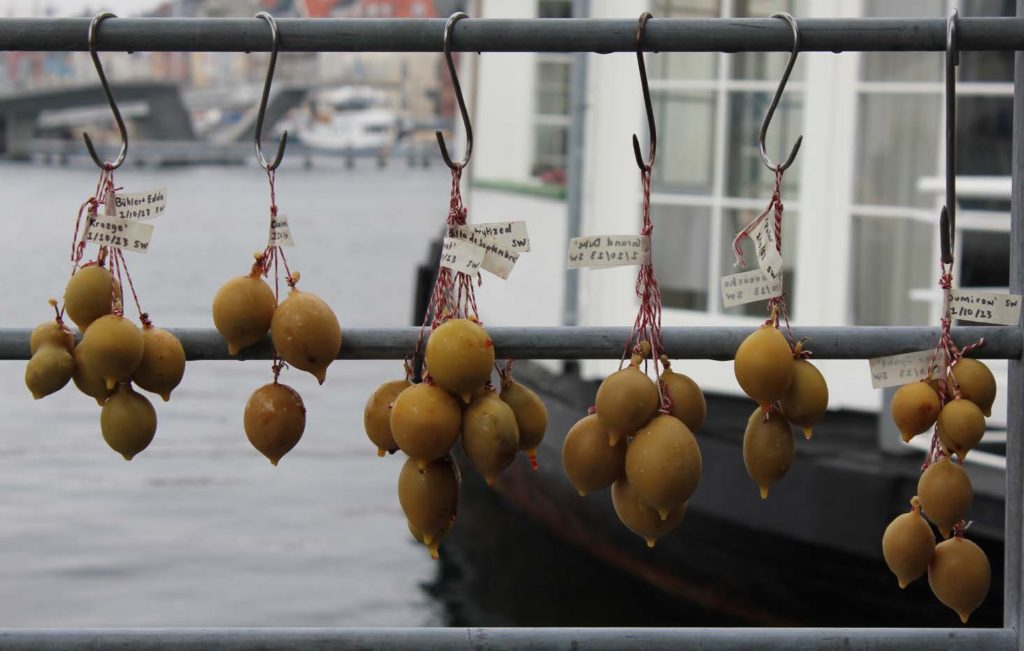trials by Sarah; post by Guillo, Avery, and Josh
Is it possible that waxing fruits, a symbol of our large-scale food distribution system that values appearance and practicality over taste, could be used instead for deliciousness?
In fact, many fruits when ripe produce a natural wax coating on their surface to reduce the water permeability of the skin. Pick an apple from a tree, rub it on your shirt and it shines; the natural waxes on the apple’s surface are polished. In addition to the wax, the surface of these fruits often host different wild yeasts and other small ‘debris’. Large- scale producers, in order to get rid of these yeasts and others microorganisms which can decrease a fruit’s shelf life, wash their fruits then recoat them with approximately the same amount of edible wax.
But here at the Lab we love wild yeast and bacteria.
At the end of September the plum season was nearing an end in Denmark. We received a box of pristine plums one day from our plum lady in Sweden. The fruits were perfectly ripe – golden, blushed with red, and, we assumed, covered with natural wax and yeast.
Beeswax is something we have been obsessed with for the last year or so. We started using it to coat our venison legs to keep them from losing moisture while the long fermentation continued. We made an ice cream with it for the dessert on our menu for Pestival. Sometimes we keep some around just to smell. Not only do we love it for its wonderful aroma and ability to infuse the food with a rich honey-like fragrance, but it also has the ability to seal a product from the outside elements. The protective barrier allows the product to retain moisture and creates the conditions for anaerobic fermentation. With preservation on our minds as winter nears, we thought beeswax could serve this purpose with our plums, enhancing the function of the natural wax to keep them even longer. The unwashed and unblemished plums were dipped into beeswax, sealed with their own microorganisms, and left to ferment.
Plums are delicate fruits. Their skin breaks easily, and the stems often fall off. To prevent both of these unwanted occurrences, the wax temperature should be as low as possible (beeswax melting point being around 63°C) as not to cook or break the plum’s skin. Additionally, it is best to select fruits with a strong stem; this makes the dipping process much easier. Hold the stem with a pair of tweezers, dip the plum into the wax, and as soon as the fruit is completely immersed lift it gently out. Keep holding it with the tweezers, and wait a couple of seconds until the wax turns white. Dip again. This should be done 5 times in a row. Then, gently lay the plum on its side and let it rest while you take care of the others. This process should be repeated about 6 times, for a total of 30 layers of wax.
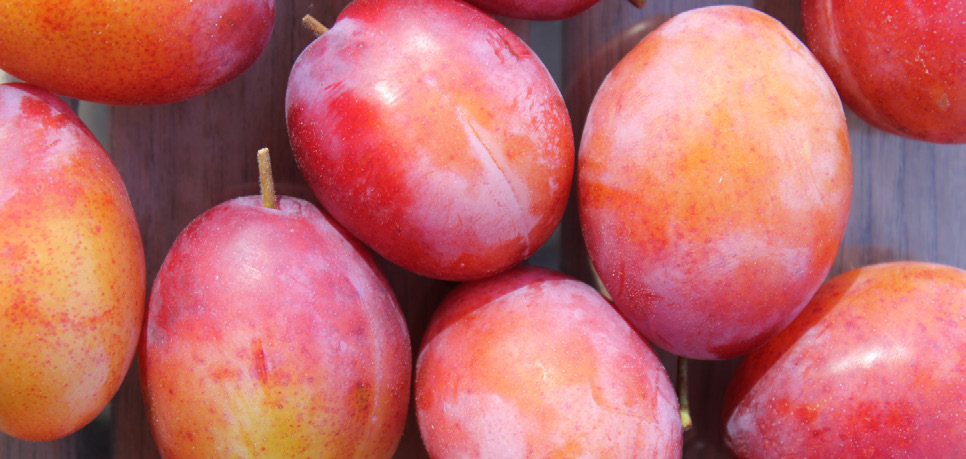
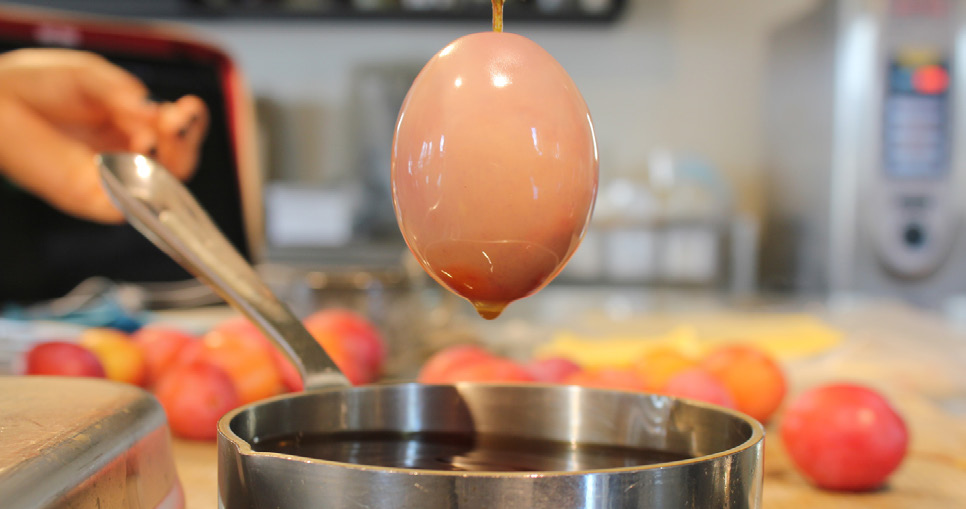
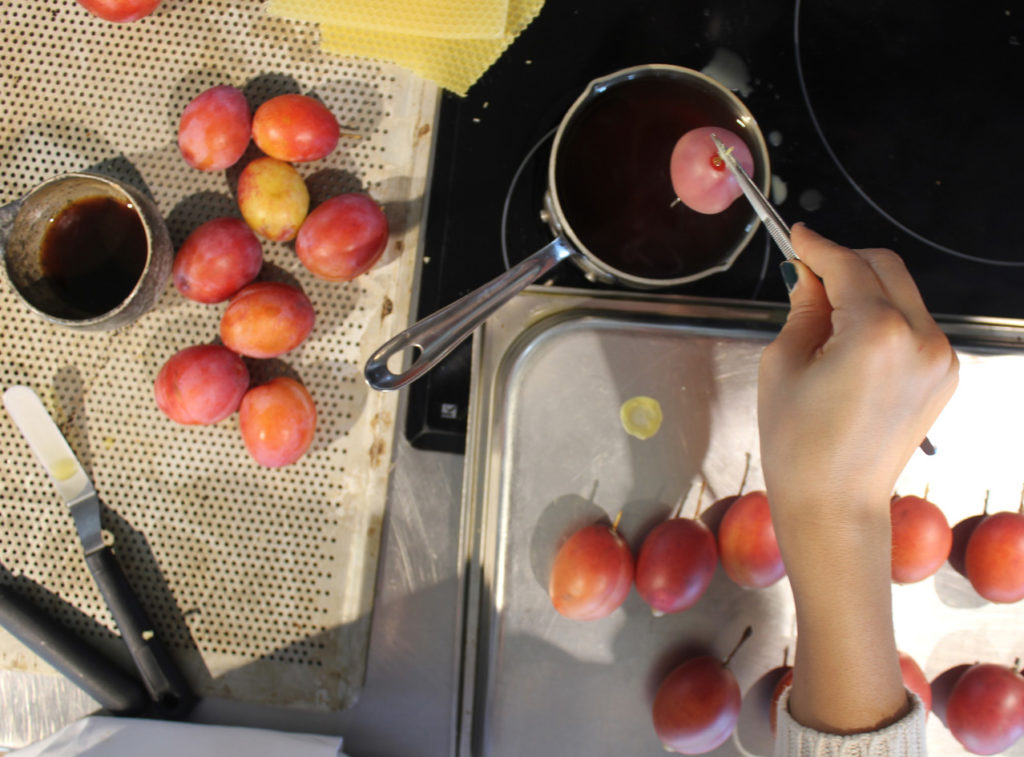
In order to let the fruit ferment, we tied them together with strings and stored them in a dark and cool environment at around 15°C.
Seven days seemed the ideal length of time for these first plums. Cutting one open began with a small hiss of gas, more felt than heard; the open halves revealed flesh bled with pink, softened to a jam, studded with small bubbles of CO2. The texture is soft, supple; the aroma of beeswax suffused through the skin. A mild hint of alcohol, a light acidity, a sparkle of perfused gas. We ate them with spoons, slurped them like oysters, ate them with our hands.
We were thrilled with this wild success. We needed to get more.
We went to Pometet, an orchard created by the University of Copenhagen to preserve and study Danish heirloom fruit varieties, to select some plums for experimentation. They were very generous with us. We decided on eleven different varieties of the ripest and most delicious plums. One would truly be amazed by the ecological and taste diversity of apples, pears, plums, sour cherries, gooseberries, and more that can emerge from such a small country, all of which are preserved on this one plot of land.
Though most, like our first batch, reached their peak after one week, some were ready after two, while others were best after only 5 days and dropped off from there. Some cracked open and oxidised, and others never even really happened. Some developed a banana-like flavour, while others gained a plastic-like taste. Their initial differences were made only more apparent through this process – a huge diversity of sizes, colours, flavours, and textures.
We conducted multiple tastings.
Their characteristics, summarised:
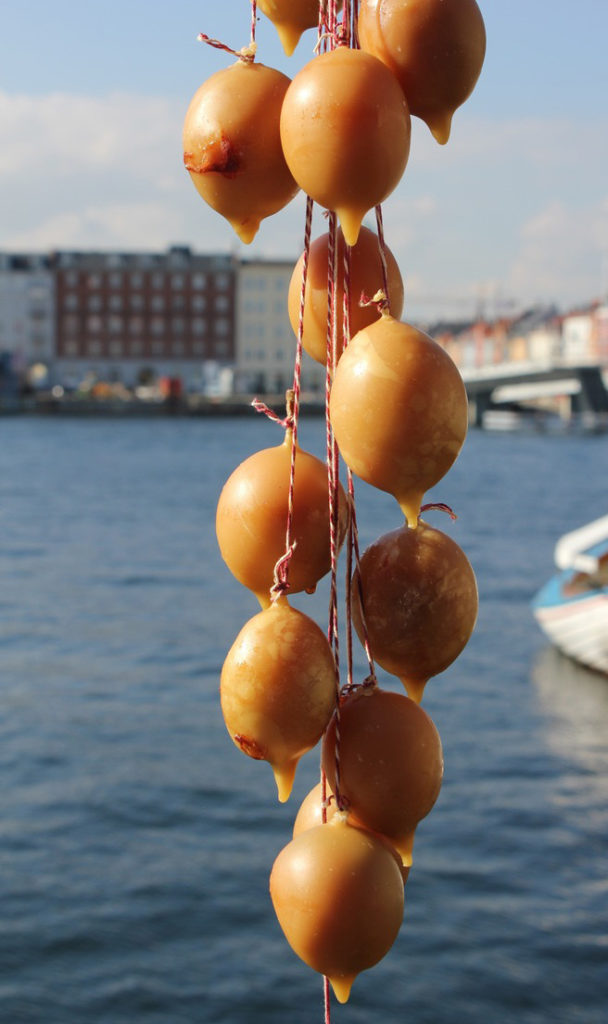
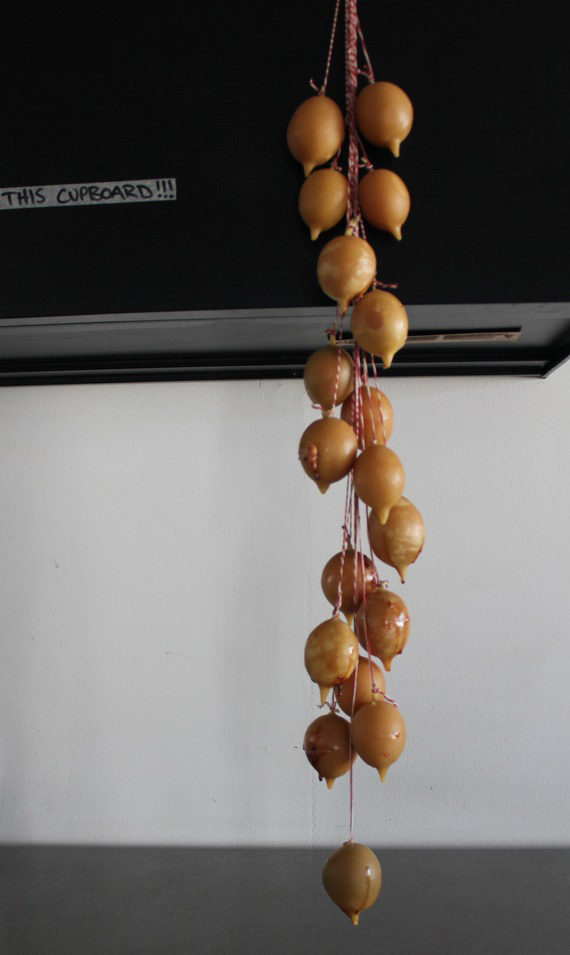
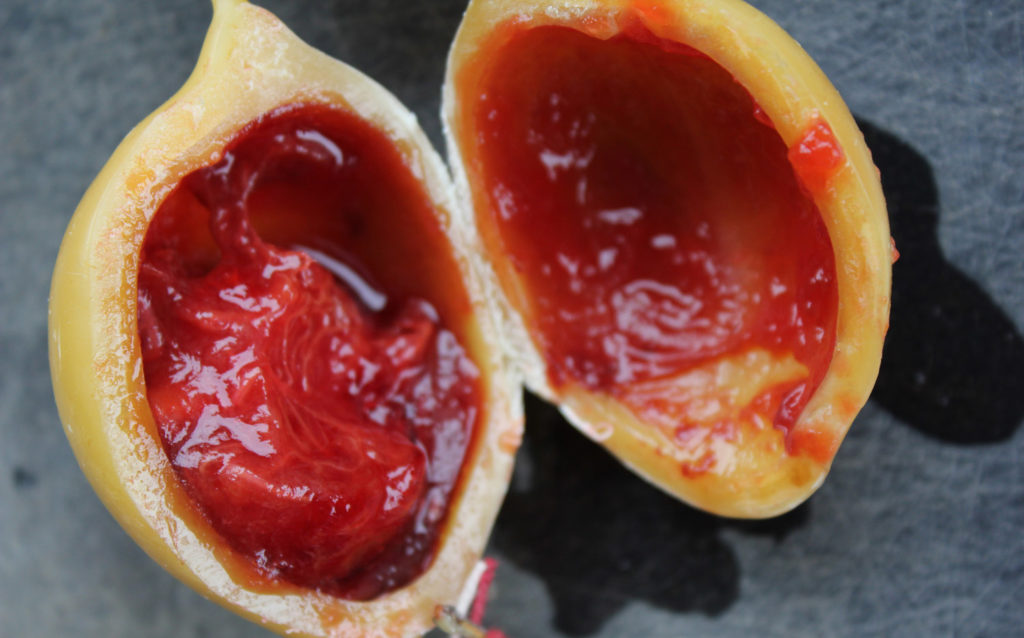
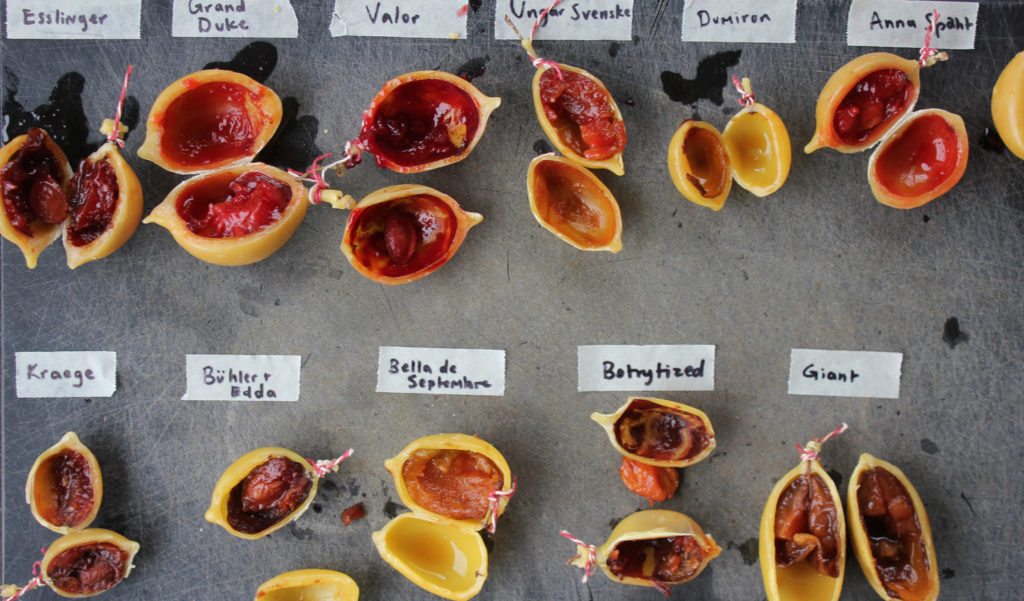
Bella de Septembre: very floral, pleasant
Giant: delicate, sweet, soft
Botrytized (Victoria): wine, bittersweet at the end, complex, very thick and jammy, spreadable, very interesting
Diamont Blomme: pineapple, metallic, sharp, fibrous, not very interesting, old supermarket plum flavour, plastic taste
Dumiron: prickly, over-ripe banana, unpleasant because of size- not a lot of meat
Anna Spaht: lots of bee wax flavour, tart, sharp, not very sweet, flat
Ungar Svenske: fibrous, bitter, oxidized, cherry flavours
Kraege: pasty, grainy, lots of sediment, bitter, boring
Buhler: apple-y, not very appealing aesthetically, sweet, fall harvest flavours, pruney, meaty, very pleasant. Very small though, not a lot of flesh.
Grand Duke: sea urchin texture, velvety, jammy, voluptuous, carbonated, very plummy, sparkly, incredibly pleasant
Esslinger: sparkling, sweet, soft finish
Even after testing this technique with a variety of local plums, we still do not understand the process fully. It is likely the fermentation is due to yeast: anaerobic conditions, available sugars, presence of alcohol and carbon dioxide. But there could also be some bacteria. And we have no idea what sorts of yeasts are on which plums – this factor could also be contributing to the differences enhanced through the fermentation. We also need to experiment more with temperature conditions – if we keep them very cool, could we extend the life of the fruit and delay the peak for weeks or months? Or even alter the microbial ecology inside the wax sarcophagus?
What we do know, however, is that some of them tasted ‘fucking delicious’ and that we now have to wait until next year to continue the research.
